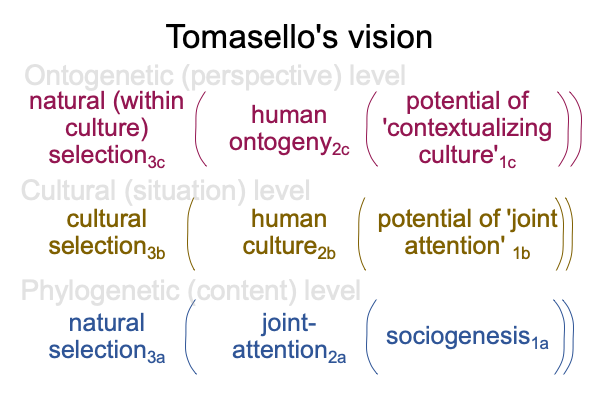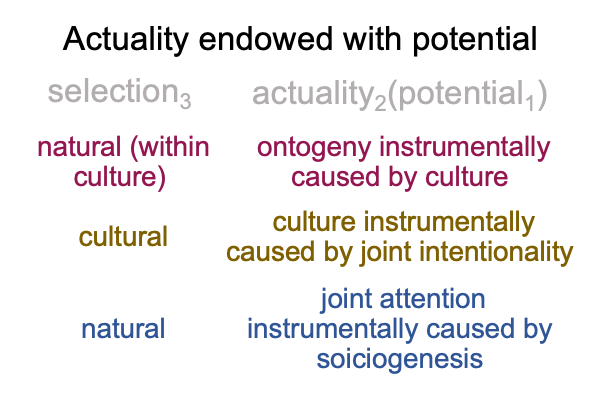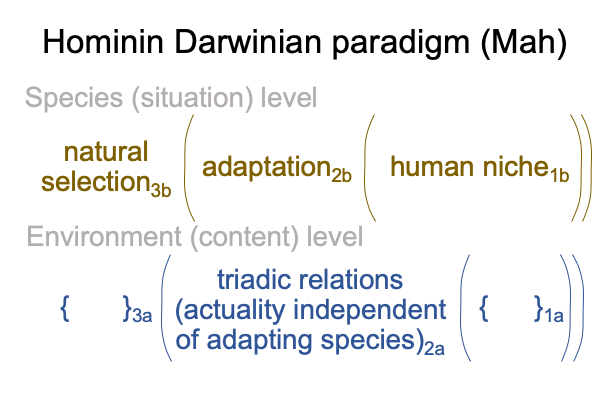0049 Perhaps, a little fig leaf of a normal context can cover thirdness for the situation level. In the following figure, I replace the empty situation-level normal context with the term, “cultural selection3b“.
Here is a picture of Tomasello’s research program.

0050 Tomasello’s vision is coherent and intellectually satisfying. Each element in the social construction (three-level interscope) is filled in. Plus, each normal context is nominally Darwinian, that is, based on selection upon variation. Also, each actuality2 connects to instrumental (as well as final) causality1.

0051 This three-level interscope does not fully manifest in the book before me. However, the title of the work before meintimates the above constellation.
Culture occupies the situation level (and originally, occupies the slot for the actuality independent of the adapting species,where the adapting species is the individual in community).
Human cognition is defined by psychological models of observations and measurements of behaviors in human newborns, infants, toddlers and so on (that is, human ontogeny).
0052 The problem?
The phylogenetic (content) level of Tomasello’s vision conceals the hypothesis that sociogenesis1a is the potential of triadic relations, as shown in the following figure.

0053 The implications?
I see four.
First, this concealment accounts for the tautological foundation of Tomasello’s natural history for hominins (points 0014 to 0016), where the potential of joint attention1b cannot be readily distinguished from sociogenesis1a.
Second, this concealment stands at the start of Tomasello’s journey, commencing with the book before me, published in 1999, and arriving at a destination in his book on human ontogeny, published in 2019. Even though Tomasello is familiar with Peirce, he does not imagine that a Peircean framework is foundational to his enterprise. Instead, he offers scientific formulations.
Oops.
0054 Third continues the second.
Mah proposes that the Peircean motif of the category-based nested form may serve as a framework capable of describing scientific research into human cognition and evolution. The category-based nested form allows one to distinguish between “behavioral competence” and “understanding”. These terms are difficult to parse, even though the distinction is important to inquiry into human understanding.
Indeed, Tomasello’s science-based arguments direct the reader’s imagination away from Peircean semiotics and towards specialized scientific languages, unsuitable for describing the thing itself. The actualities labeled “joint attention2a“, “culture2b” and “human ontogeny2c” are models based on observations and measurements of phenomena. They are not descriptions of the thing itself.
Fourth, the above figures allow the reader to appreciate the relational being conceived in the work before me. Chapter three is titled, “Joint Attention and Cultural Learning”. Chapter four is titled, “Linguistic Communication and Symbolic Representation”. These titles suggest that hominin culture2b is instrumentally caused by the adaptation of joint attention2a and that joint attention2a emerges from (and situates) sociogenesis1a.
